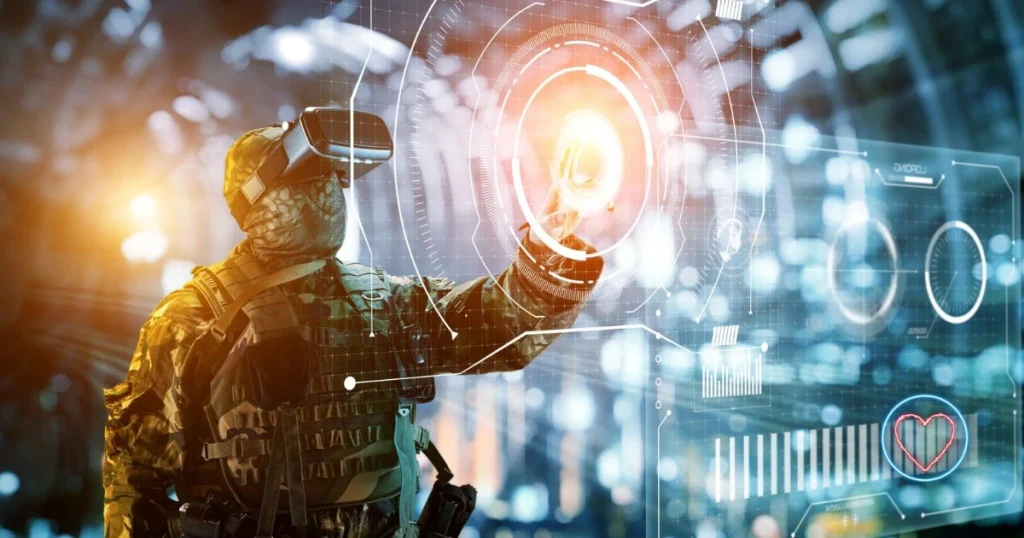In an era defined by geopolitical instability and rapid technological evolution, defense technology has emerged as a critical cornerstone of national security strategies. From autonomous drones to hypersonic missiles, nations are increasingly relying on cutting-edge innovations to protect their interests, deter adversaries, and maintain global influence. As traditional warfare gives way to digital battlegrounds and unmanned systems, the defense sector is undergoing a fundamental transformation—one that blends artificial intelligence (AI), robotics, cybersecurity, and advanced materials science.
This article explores the current state of defense technology, its strategic importance, ethical dilemmas, and the direction it is likely to take in the coming decades.
A Brief History of Defense Innovation
Throughout history, technological superiority has often defined military dominance. Ancient civilizations relied on metallurgy to produce superior weapons, while the Industrial Revolution introduced mechanized warfare. The 20th century saw a dramatic leap with the advent of tanks, aircraft, radar, nuclear weapons, and ballistic missiles.
The Cold War era spurred intense technological rivalry, particularly between the United States and the Soviet Union, leading to advancements in satellite surveillance, stealth technology, and electronic warfare. The 21st century, however, has introduced an entirely new paradigm—one where digital capabilities are as crucial as kinetic force.
Modern Defense Technology: Key Domains
1. Artificial Intelligence and Autonomy
Artificial intelligence has revolutionized defense planning and execution. AI systems now assist in threat detection, logistics, target identification, and battlefield strategy.
- Autonomous drones can carry out surveillance and strike missions without human pilots.
- AI-enabled analytics process vast amounts of satellite and sensor data to identify patterns and predict threats.
- Unmanned ground vehicles (UGVs) patrol borders or clear landmines without risking soldiers’ lives.
For instance, the U.S. Department of Defense (DoD) has incorporated AI into Project Maven, which helps analyze drone footage to detect insurgent activity. Similarly, Israel’s Iron Dome missile defense system uses real-time analytics to intercept incoming projectiles with remarkable accuracy.
2. Cybersecurity and Information Warfare
Modern conflicts increasingly occur in cyberspace. States and non-state actors alike target power grids, financial systems, and communication networks to sow chaos and gain strategic advantages.
Defense organizations now maintain elite cyber units responsible for both defense and offensive operations. These units are tasked with:
- Protecting military and civilian infrastructure
- Disrupting enemy communications
- Launching digital counterattacks
Russia’s cyberattacks in Ukraine, and China’s suspected espionage efforts against Western institutions, underscore the growing threat of information warfare. Consequently, NATO has recognized cyberspace as the “fifth domain of warfare,” alongside land, sea, air, and space.
3. Hypersonic and Directed Energy Weapons
Nations are investing heavily in next-generation weapons systems that promise unmatched speed and precision.
- Hypersonic missiles, traveling at speeds over Mach 5, can evade most current missile defense systems.
- Directed energy weapons (DEWs)—such as high-powered lasers and microwave weapons—offer near-instantaneous target engagement, ideal for disabling drones and incoming projectiles.
Countries like the U.S., China, and Russia are all racing to deploy hypersonic glide vehicles (HGVs) and directed energy systems in a bid to gain first-strike advantages or effective deterrence capabilities.
4. Quantum Technology
Quantum computing and quantum communication hold promise for dramatically enhancing secure communications and data processing speeds.
- Quantum encryption could make military communications virtually unbreakable.
- Quantum sensors offer higher precision for submarine detection, navigation, and espionage.
The Pentagon has invested in quantum research as part of its efforts to maintain technological superiority, particularly in communication and surveillance domains.
5. Advanced Materials and Additive Manufacturing
Modern defense systems benefit immensely from new materials that are lighter, stronger, and more adaptable.
- Graphene and carbon nanotubes are used to reinforce armor while reducing weight.
- Additive manufacturing (3D printing) allows for rapid prototyping of parts, reducing logistical burdens and enabling field repairs.
These materials support the development of stealth aircraft, lightweight drones, and next-generation body armor for soldiers.
Space: The Final Frontier of Defense
The militarization of space is no longer a hypothetical scenario—it’s unfolding in real time. Nations are deploying satellites capable of surveillance, communication, and potentially, offensive action.
- Anti-satellite (ASAT) weapons are being tested by countries like India, China, and Russia.
- The U.S. Space Force, established in 2019, focuses on defending American interests beyond Earth’s atmosphere.
Control of space-based assets will play a decisive role in future conflicts, given the reliance on GPS, communication relays, and reconnaissance satellites for military operations.
Private Sector’s Role in Modern Warfare
A new generation of private defense companies has reshaped the defense landscape. Startups and tech giants alike are now integral to military innovation.
- Palantir Technologies provides AI and big data solutions for battlefield intelligence.
- Anduril Industries develops autonomous defense systems, including AI-powered border surveillance towers and combat drones.
- SpaceX and Blue Origin have become crucial partners in military satellite launches and space logistics.
These companies offer agility and innovation often lacking in traditional defense contractors. Their dual-use technologies—applicable in both civilian and military contexts—raise important regulatory and ethical questions.
Ethical and Legal Challenges
As defense technology grows more advanced, it also raises complex ethical dilemmas.
1. Autonomous Weapons and Accountability
Who is responsible when an AI-controlled drone kills civilians by mistake? Autonomous weapons systems challenge traditional concepts of military accountability and international law.
The United Nations has debated banning so-called “killer robots,” but no binding treaty exists yet. Countries remain divided between prioritizing technological advantage and regulating potentially uncontrollable weapons.
2. Surveillance and Civil Liberties
Enhanced surveillance capabilities, while useful for national defense, risk infringing on citizens’ privacy rights. Biometric data collection, facial recognition, and digital monitoring must be carefully governed to prevent abuse.
3. Proliferation and Global Stability
Once cutting-edge technology spreads to hostile states or non-state actors, global security becomes more fragile. Drones and cyber tools are relatively easy to replicate or acquire, increasing the threat of asymmetric warfare.
Weapons once monopolized by superpowers can now be wielded by militias or terrorist groups, destabilizing regions and undermining traditional defense frameworks.
Geopolitical Dynamics and Defense Alliances
Technology not only enhances military capability but also shapes international alliances and rivalries.
- AUKUS (Australia–UK–US) focuses on nuclear-powered submarines and cyber cooperation.
- NATO is updating its strategic posture to include cyber and space as core elements of collective defense.
- China and Russia are deepening technological partnerships to counter Western influence.
Defense technology has become both a tool of power projection and a bargaining chip in diplomatic negotiations.
The Future: Smart Warfare and Integrated Defense Systems
As defense ecosystems evolve, the battlefield of tomorrow will be characterized by:
- Human-machine teaming: Soldiers working alongside robots and AI agents
- Edge computing: Real-time data processing at the tactical level
- Swarm robotics: Drones operating in coordinated groups to overwhelm defenses
- Bio-enhanced soldiers: Integration of exoskeletons, brain-computer interfaces, and real-time health monitoring
In this future, information superiority and speed of decision-making will determine victory more than sheer firepower.
Conclusion: A Double-Edged Sword
Defense technology is both a shield and a sword. It protects nations, saves lives, and deters conflict—but it can also escalate arms races, blur ethical boundaries, and enable destructive power in the wrong hands.
To harness its benefits responsibly, governments, industries, and international organizations must:
- Foster transparent research and development
- Establish global norms for emerging technologies
- Balance innovation with accountability
As the line between war and peace, human and machine, physical and digital continues to blur, defense technology will remain a defining force in the 21st century. Its trajectory will shape not just the outcomes of battles—but the very nature of power, peace, and humanity.











